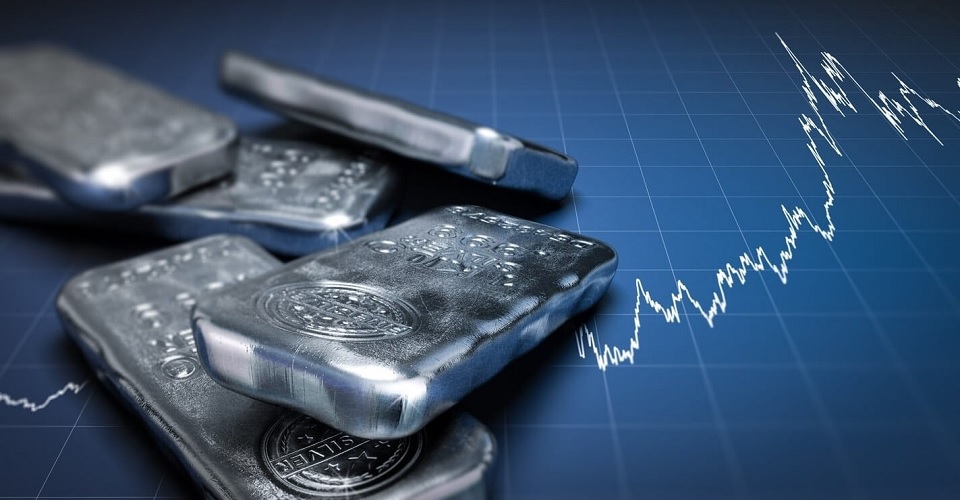Blog
What is Silver?

Silver is a commodity that is widely used not only as jewellery but also in the manufacturing of electronics. It is considerably sought after, and while it is not as scarce or as valuable as gold, it is traded a lot.
Silver can be bought in bars, coins and bullion. Investors also speculate on the spot price of silver. The live silver price is used to predict the price movements in the markets. Back in the 1970s, when the live silver price was first recorded, it was at $1.80 per troy ounce. But after a few years it rose to $36. Shortly after it fell back below $10, until during the 2008 crisis its price doubled to around $20. In 2011 the price of silver was at the highest recorded price, which was nearly $50 per ounce.
You might be asking what could have led to such considerable changes in the price of silver over the years. In reality there are several factors which have an impact on price movements, including:
- the forces of supply and demand these impact all commodities, including silver. If there is a perceived increase or decrease in the demand for silver, especially by large importers such as the US, UK and India, then movements in its price will occur. The main suppliers of silver are Mexico, Peru and China. These cater for most of the demand for silver, particularly for its use in industrial applications, since silver has a high electrical conductivity and is thus used for various products, including solar panels as well as in the medical industry.
- economic factors in periods when there is economic strength, the price for silver will rise due to the fact that there will be an increase in the demand for items such as jewellery, electronics, cars, and other products which include silver components. Even during periods of economic crises, the price of silver could rise as it is considered as a relatively cheaper safe haven.
- the gold-silver ratio this ratio demonstrates the weight of silver required to purchase one ounce of gold. In times when this ratio is high, silver is usually favoured as it is cheaper than gold. On the other hand a lower gold-silver ratio will favour gold
- silver and USD here we have an inverse relationship. In cases when the USD weakens, silver becomes cheaper for other countries to buy, and vice versa. This also leads to the fact that it is a popular hedge against inflation since silver generally retains its value.
Silver can be traded in various ways, such as:
- buying silver as a physical asset
- futures and options
- exchange-traded funds
Traders can opt to trade silver for one or more reasons, including:
- to hedge against inflation
- to capitalise on the weak USD or on global industrial strength
- to maintain a diversified portfolio
Silver can be bought in bars, coins and bullion. Investors also speculate on the spot price of silver. The live silver price is used to predict the price movements in the markets. Back in the 1970s, when the live silver price was first recorded, it was at $1.80 per troy ounce. But after a few years it rose to $36. Shortly after it fell back below $10, until during the 2008 crisis its price doubled to around $20. In 2011 the price of silver was at the highest recorded price, which was nearly $50 per ounce.
You might be asking what could have led to such considerable changes in the price of silver over the years. In reality there are several factors which have an impact on price movements, including:
- the forces of supply and demand these impact all commodities, including silver. If there is a perceived increase or decrease in the demand for silver, especially by large importers such as the US, UK and India, then movements in its price will occur. The main suppliers of silver are Mexico, Peru and China. These cater for most of the demand for silver, particularly for its use in industrial applications, since silver has a high electrical conductivity and is thus used for various products, including solar panels as well as in the medical industry.
- economic factors in periods when there is economic strength, the price for silver will rise due to the fact that there will be an increase in the demand for items such as jewellery, electronics, cars, and other products which include silver components. Even during periods of economic crises, the price of silver could rise as it is considered as a relatively cheaper safe haven.
- the gold-silver ratio this ratio demonstrates the weight of silver required to purchase one ounce of gold. In times when this ratio is high, silver is usually favoured as it is cheaper than gold. On the other hand a lower gold-silver ratio will favour gold
- silver and USD here we have an inverse relationship. In cases when the USD weakens, silver becomes cheaper for other countries to buy, and vice versa. This also leads to the fact that it is a popular hedge against inflation since silver generally retains its value.
Silver can be traded in various ways, such as:
- buying silver as a physical asset
- futures and options
- exchange-traded funds
Traders can opt to trade silver for one or more reasons, including:
- to hedge against inflation
- to capitalise on the weak USD or on global industrial strength
- to maintain a diversified portfolio